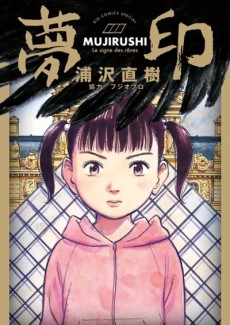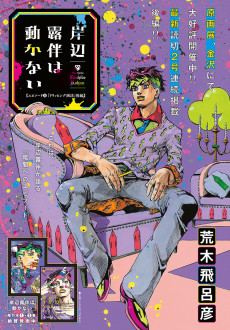KISHIBE ROHAN LOUVRE E IKU
STATUS
COMPLETE
VOLUMES
1
RELEASE
April 19, 2011
CHAPTERS
1
DESCRIPTION
As Rohan, a young Japanese manga artist, is drawing, he meets a mysterious, beautiful woman who tells him of a cursed 200-year-old painting. The painting was created using the blackest ink ever known, which came from a 1,000-year-old tree that the painter had cut down without the approval of the Emperor. The painter was executed for this, but the painting was saved from destruction by a curator of the Louvre. A decade later, Rohan visits Paris and asks the museum to unearth the painting from deep within its archives—but he is completely unprepared for the power of the curse he has unleashed.
(Source: NBM Publishing)
CAST
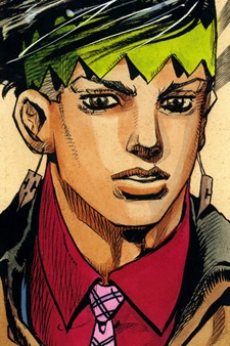
Rohan Kishibe
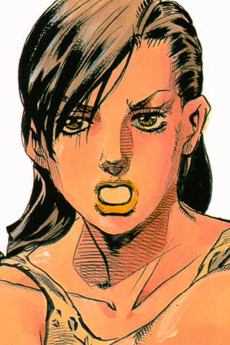
Nanase Fujikura
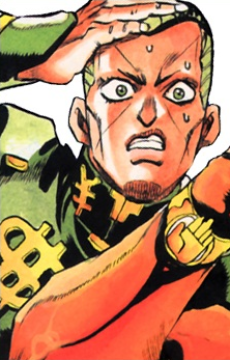
Okuyasu Nijimura
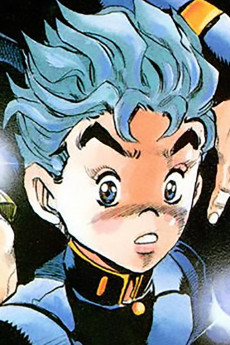
Kouichi Hirose
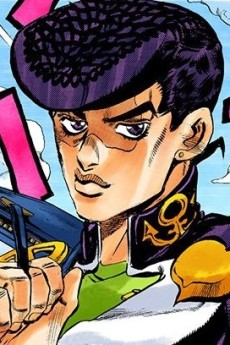
Jousuke Higashikata
CHAPTERS
RELATED TO KISHIBE ROHAN LOUVRE E IKU
REVIEWS

sadJoe
92/100A shining example of the one-shot format, this work of Araki-sensei's is a testament to his art & master craftsmanship.Continue on AniList
This is unironically the best one-shot I have ever encountered. Such a statement may not mean much coming from me, but it is nevertheless true and is not completely without merit. I have yet to read another similar work of this format that demonstrates a similar legitimate mastery of an artform.
I do not mean to talk Rohan at the Louvre up so much without delving into its components which make it so worthwhile of a read. As I have already mentioned, saying something like "this is the best one-shot" does not mean much coming from the mouth of anyone, especially if that someone is me. Considering how little I have explored the form of the one-shot. Despite this being the case, I feel that my opinion on the matter is not completely without any merit. I am at least able to understand that there is something different about this one-shot of Araki's. In addition, I am also able to comprehend that there is a reason it stands out from the crowd and rest of the mold.
Hirohiko Araki is a living legend. I mean this in the strictest sense, he is a true master of his craft. Anyone who has put in as much time as he has (regardless of the type of work) should be commended and recognized for their intentional efforts. Araki is the mangaka's mangaka. I intentionally use this for the sake of hyperbole, yet I feel that this is a true reflection of his personage as well. For decades, he has demonstrated his worth as a force in the world of manga. One does not reach the heights that he has without intentional, stringent effort on his own part. Exemplified throughout his Jojo's, Araki shows what it means to be a manga artist.
There is really no telling what it must be like to come to such an understanding. One thing is for certain, anyone who dedicates such an overwhelming period of their lives to any sort of practice is to be commended. This is not to say that everyone who does so is destined to reach their own metaphorical peak of Mt. Everest; I merely say this because it takes a very special person to employ themselves and buckle down for the sake of their own art, particularly when the results of such an endeavor are so unpredictable.
Regardless of how one feels about his work, it is clear that Hirohiko Araki is a force to be reckoned with when it comes to manga. His time working at his craft has already been established. The one-shot, Rohan at the Louvre is striking evidence. To me, it demonstrates Araki's expert craftsmanship, and it shows his ability to facilitate the finer details of a story for the sake of guiding the audience through the narrative. He is evidence of the beauty of manga; he demonstrates that this is a creative medium which stands out from the rest of the mold. It truly is something special.
In his Manga: Theory & Practice, Araki points out the guiding elements of manga. He does begin by saying that this applies to any creative medium which relies upon the story, but I digress. Each and every story depends upon the following: Character, Story, Setting, Theme. In addition, he lists these traits of manga in order of importance. This is something that must be emphasized and categorized. Whenever manga -- or any other creative work for that matter -- is capable of capturing all four of these separate, but essential, elements in an effective way; then there is no telling how it will pay off.
Major Fundamentals of Manga Structure
The four separate elements I have already mentioned can be viewed as "the four major fundamentals of manga structure," as this is how Araki lists them. In order of importance, they are as follows: Character. Story. Setting. Themes. These are not separate elements, as each one of them largely relies on one another for the sake of suceeding within the context of their manga's narrative structure. This is certainly the case within other types of creative mediums as well, but as Araki puts it, "[the] art is then [the] ultimate tool to expand and unify these elements, aided by [the] dialogue." This much may be obvious, given the nature of manga, but it nonetheless is relevant to understanding how a manga's narrative works and builds itself upon the foundations laid by its four different structural elements.
I would like to touch base upon the quality of character found within the confines of Rohan at the Louvre. The titular protagonist, Rohan Kishibe, is one that will be familiar to fans of Jojo's. First appearing during Part 4, Rohan is an eccentric young man who happens to be a mangaka. During his initial appearance, he is a calculating, cold-hearted individual who is willing to do whatever it takes for the sake of creating manga. Like many characters within the Jojo's universe, he experiences a sudden change within himself as a result of his encounter with a Joestar. The nature of his character is not limited to this a development such as this though. Knowledge of these aforementioned developments (i.e. his journey from antagonist to JoBro, etc.) are not vital parts of enjoying Rohan at the Louvre -- though I would happen to recommend reading/watching Jojo's first. Rather, this foreknowledge will be helpful in determining the course of Rohan's journey which is illustrated throughout the course of this one-shot. It will add further depth to the worthwhile journey that is the reading of Rohan at the Louvre.
"I believe that manga is the most powerful multidisciplinary art form because it is capable of simultaneously expressing the four major fundamentals and art and writing."
Rohan at the Louvre is a fantasy story, at its core. Led by Rohan Kishibe, the young manga artist, the manga depicts his travels in aims of developing and discovering a story for his manga. Given the nature of his desires to capture the authentic in his work, he finds himself traveling in search of events worthy enough to capture in his art. During these travels of his, he encounters a beautiful woman. Smitten with her, he attempts to converse with her. At some point, she begins to tell him about the mysterious origins of a painting that was created using dark ink -- ink which was taken from a tree that's a millennium old. It is told that the painting was saved and kept in the possession of a curator from the Louvre Museum in Paris.
One of the underlying premises of Araki's approach to manga is the fact that characters and setting are indispensable. There is, and/or should be, a balance between each of the major fundamentals (i.e. character --> story --> setting --> theme) in order that they may all work together for the sake of meeting presupposed aims thereby becoming a successful manga. I call attention to this for the sake of letting readers know that Rohan at the Louvre is an indispensable product of this understanding of Araki's.
Character: Rohan Kishibe, manga artist. An eccentric young talent with a thirst for creating manga; will go to whatever lengths necessary to accomplish his goals.
Story: "Rohan's life changes the day he meets a young woman who introduces him to the world of art. She tells him about sculpture, music, and painting - particularly a "cursed painting" by a Japanese artist long ago acquired by a curator at the Louvre. Then the young woman suddenly disappears. Ten years later, Rohan, now a mangaka, decides to conduct his own investigation at the Louvre to find the painting that just might lead him to the young woman. What is its secret?"
Setting:
- Rohan's Grandmother's Inn
- Morioh
- Louvre Museum in Paris
Theme: This tale is about the quintessentially human struggle (both intrapersonal & interpersonal) whose end seeks freedom from the chains of hatred. These themes are developed through the motif of the dark ink from the tree, which could be viewed in albeit metaphorical way as well.
To sum it all up, it should be stated that Araki's art is the glue that holds these underlying elements together. His penmanship works in a way that directly affects and accentuates each and every element together in a deeply personal way that highlights each of them in a cooperative manner. This is noticeable not only in the characters themselves but in the thematic elements as well.
Final Thoughts
This is something that is definitely worth reading. Rohan is a character that has grown on me. Unsurprisingly, upon his initial appearance I was not fond of him by any stretch of the imagination. Seeing his progression, both as a character and in my own personal feelings toward him, is pretty cool. Regardless of how much I ever liked (or disliked) him, I have always viewed him as interesting. This thought of mine stands to this day, and it is part of the reason that Rohan at the Louvre currently sits on my bookshelf at home. For what it is, as a one-shot/short story, I feel that it is worth the rating that it has been given. It is a pivotal example for the medium. But what do I know?
Anyway, if you have yet to give this a read, give it a whirl. It is the work of a master craftsman.

Cheers, Araki-sensei.
SIMILAR MANGAS YOU MAY LIKE
 MANGA DramaLouvre no Neko
MANGA DramaLouvre no Neko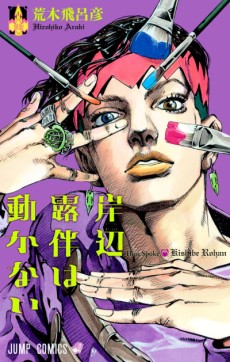 MANGA MysteryKishibe Rohan wa Ugokanai
MANGA MysteryKishibe Rohan wa Ugokanai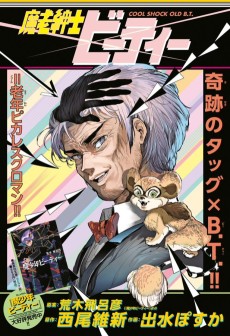 MANGA AdventureMarou Shinshi BT
MANGA AdventureMarou Shinshi BT
SCORE
- (3.8/5)
MORE INFO
Ended inApril 19, 2011
Favorited by 115 Users



